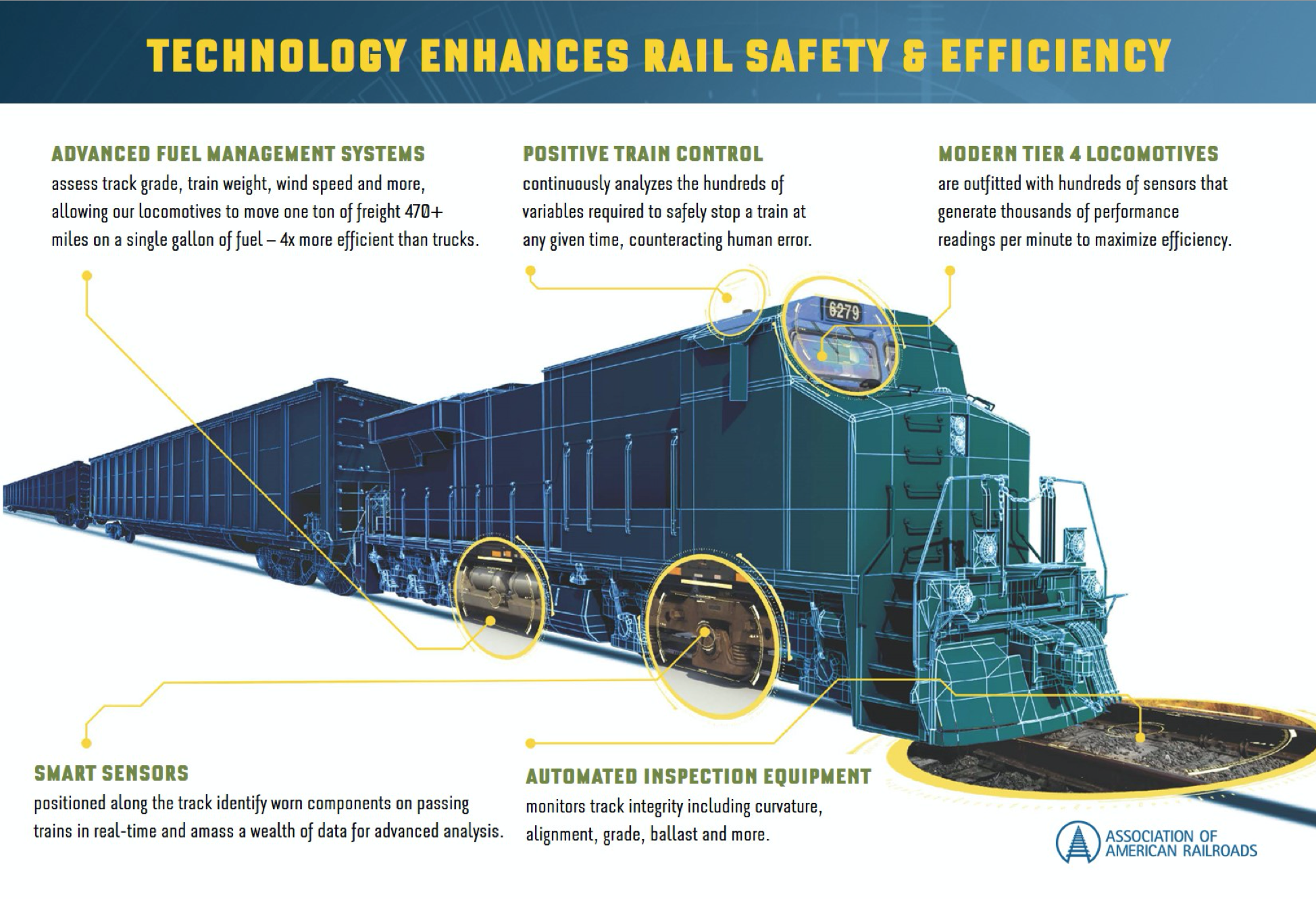Rail regulators say PTC safety net is finally active
Originally set for launch in 2015, Positive Train Control can automatically stop a train before a collision or derailment, FRA says.

Federal rail regulators today announced that positive train control (PTC) technology is finally in operation on all 57,536 required freight and passenger railroad route miles, saying the system can automatically stop a train before certain human-related accidents occur.
Specifically, the safety system is designed to prevent train-to-train collisions, over-speed derailments, incursions into established work zones, and movements of trains through switches left in the wrong position, according to the U.S. Department of Transportation’s Federal Railroad Administration (FRA).
While PTC was originally mandated for use by the end of 2015, as established by the Rail Safety Improvement Act of 2008 (RSIA), that deadline was twice delayed amid industry complaints about the program’s cost. It now meets the newest deadline of December 31.
The act mandates PTC implementation on Class I railroads’ main lines over which five million or more gross tons of annual traffic and certain hazardous materials are transported, and on any main lines over which intercity or commuter rail passenger transportation is regularly provided. Those requirements cover 41 railroads in all, including seven Class I railroads, Amtrak, 28 commuter railroads, and five other freight railroads.
FRA regulators have supported the initiative by providing $3.4 billion in grant and loan funding to support railroads and other entities that sought federal financial assistance for that purpose. But the overall cost ran much higher, with the nation’s largest, “Class I” railroads investing nearly $11.5 billion to develop, install, and implement the networked PTC systems, according to the Association of American Railroads (AAR).
Despite its cost, the system has the potential to pay off by avoiding accidents and supporting interoperable communication between PTC networks, since railroads regularly run across each other’s tracks. In addition to that improved safety, PTC will also deliver greater efficiency and reliability through its support of geomapping, advanced communications systems, and upgraded locomotive hardware, AAR said.
“America’s railroads have reached an important milestone this year that will enhance safety and springboard innovation long into the future,” AAR President and CEO Ian Jefferies said in a release. “While the industry is proud of this accomplishment, the job is never finished. Railroads will remain forward-looking and continue advancing safety through innovation and technology.”
Regulators also pointed to the safety benefits of the new network. “On behalf of extraordinary professionals at FRA and myself, I congratulate the railroads, particularly their frontline workers, as well as PTC system suppliers and vendors on this transformative accomplishment,” FRA Administrator Ronald Batory said in a release. “PTC is a critical piece and new dimension of safety in the railroad industry, but it does not take the place of the men and women who operate and maintain freight and passenger trains. At its core, PTC is a risk reduction system that will make a safe industry even safer, and provide a solid foundation upon which additional safety improvements will be realized.”
Despite its avowed focus on safety in relation to the PTC mandate, the FRA in the Trump Administration has largely focused on rolling back safety regulations in the sector. In 2019, FRA leaders said that U.S. railroads will not have to meet minimum requirements for the size of train crew staffs, known as "crew redundancy," in a ruling that aligned with rail industry interests and disappointed unions and environmental groups.
AAR CEO Ian Jefferies on railroads meeting the PTC requirements: "America’s railroads have reached an important milestone this year that will enhance safety and springboard innovation long into the future." https://t.co/JoTdHf3XDE
— AAR (@AAR_FreightRail) December 29, 2020
All required railroads have met the Dec. 31 positive train control deadline set by Congress. Read more about this landmark achievement: https://t.co/jeZj4A1mou. #PTC pic.twitter.com/RvkC2Y7mLt
— The FRA (@USDOTFRA) December 29, 2020
Related Articles
Copyright ©2024. All Rights ReservedDesign, CMS, Hosting & Web Development :: ePublishing